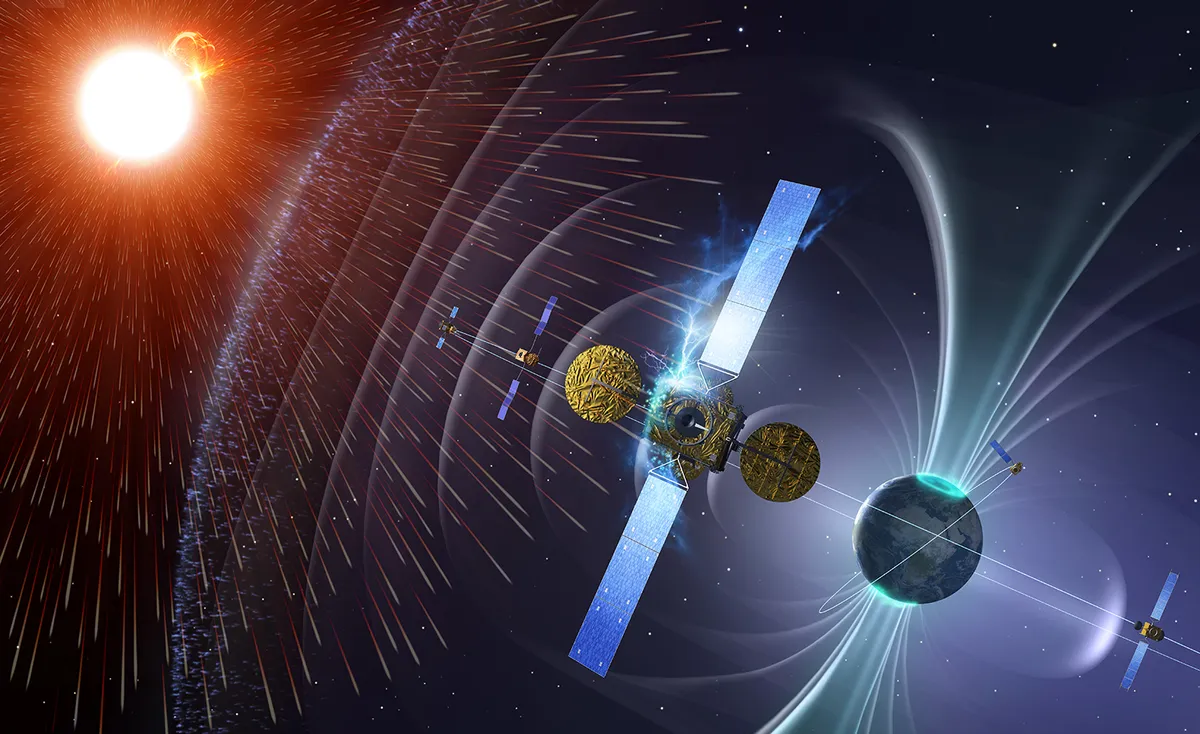Cosmic rays are high-energy subatomic particles that zip around in outer space.
They’re accelerated to enormous speeds by astrophysical events like coronal mass ejections on the Sun or supernovae exploding across the Galaxy.
When a cosmic ray encounters planet Earth, it soon hits a gas atom high in the atmosphere, creating a burst of other particles which themselves fly forwards to trigger further interactions, until a huge cone-shaped cascade of different particles develops.

This cosmic radiation is a hazard not just for astronauts, but also for passengers and aircrew flying high in the atmosphere – especially on routes over the poles, where the protection from the planet’s magnetic field is weakest.
Much of these ‘secondary cascades’ are absorbed by the atmosphere, but some of the more penetrating particles do reach Earth’s surface, in particular muons, but also some neutrons, electrons and gamma rays.
There’s a lot of interest, then, in understanding how these cosmic rays propagate through the atmosphere.
Several computer models have been created over the years, and now Olesya Sarajlic and Xiaochun He, both in the Department of Physics and Astronomy at Georgia State University, Atlanta, have released a new simulation package they claim offers greater flexibility than others.

Their Earth Cosmic Ray Shower (ECRS) software is based on Geant4, a particle physics modelling platform created at CERN, and can simulate how the radiation environment changes with increasing altitude, across latitudes between the poles and the equator, and also with variations in Earth’s atmosphere and magnetic field.
Sarajlic and He’s new model represents a substantial update from an earlier version created in 2007.
I must confess a personal interest in this work: in that same year, I was using my own Geant4-based computer model to study the cosmic rays penetrating the topsoil of Mars, to understand how long any Martian microbes might be able to survive the radiation.

But what really caught my eye about this new paper was how their updated model could be used
to improve all the applications of cosmic rays.
These high-energy radiation particles are not only a hazard; they also offer some really neat uses.
One major area exploiting cosmic rays is in using the natural flow of muons from the atmospheric cascades in the same way that X-rays are used to take images through the human body, but on much larger scales.
X-rays are blocked by just a few centimetres of metal or rock, but cosmic-ray muons can penetrate several metres of solid rock.

Such ‘muon tomography’ was used in 2017 to scan the interior structure of the Great Pyramid of Giza, leading to the discovery of a large, previously unknown cavity hidden above the Grand Gallery.
This technique could also be used to detect if someone was trying to smuggle a chunk of uranium in a shipping container, for example, or to safely examine inside a damaged nuclear reactor such as at the Fukushima plant in Japan.
Sarajlic and He’s updated cosmic-ray model could improve all these sorts of practical applications.
Lewis Dartnell was reading Novel Simulation Framework for Analyzing Cosmic Ray Particle Distributions at a Global Scale by Olesya Sarajlic and Xiaochun He Read it online at arxiv.org/abs/2411.03142.
This article appeared in the February 2025 issue of BBC Sky at Night Magazine.
